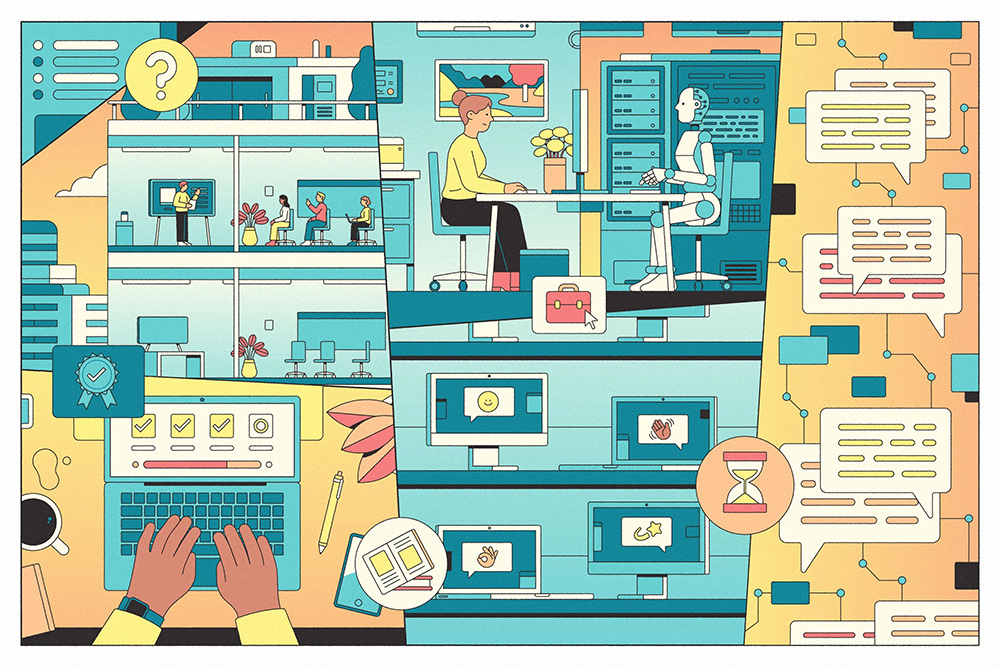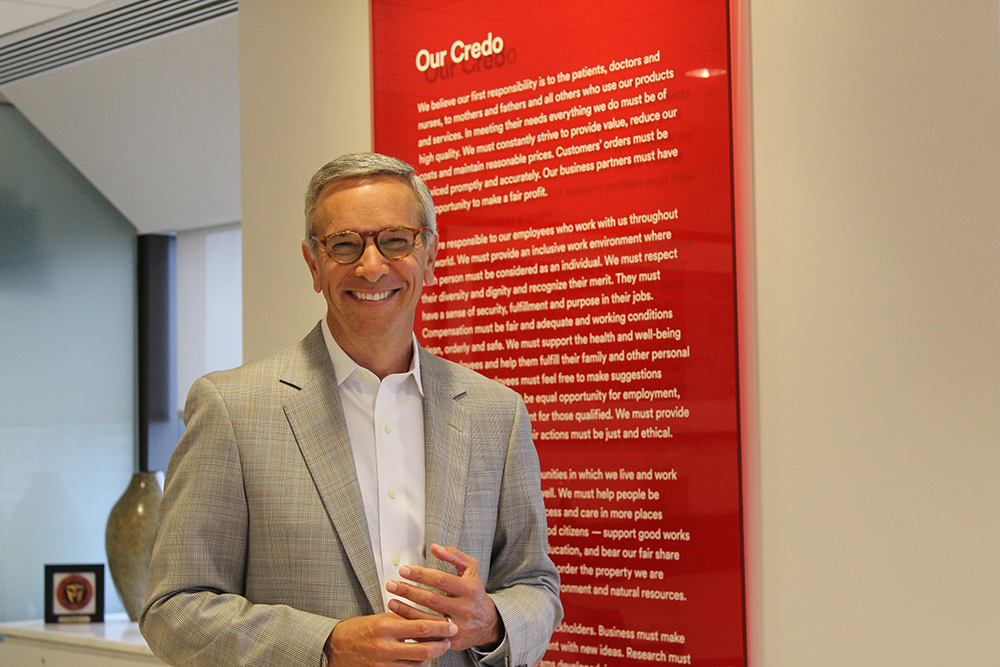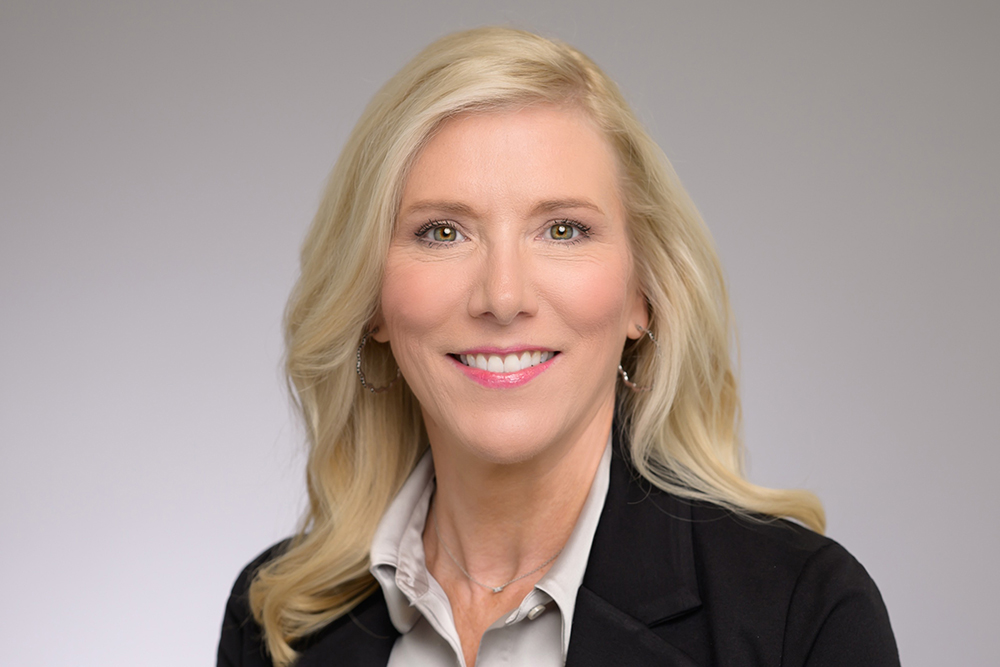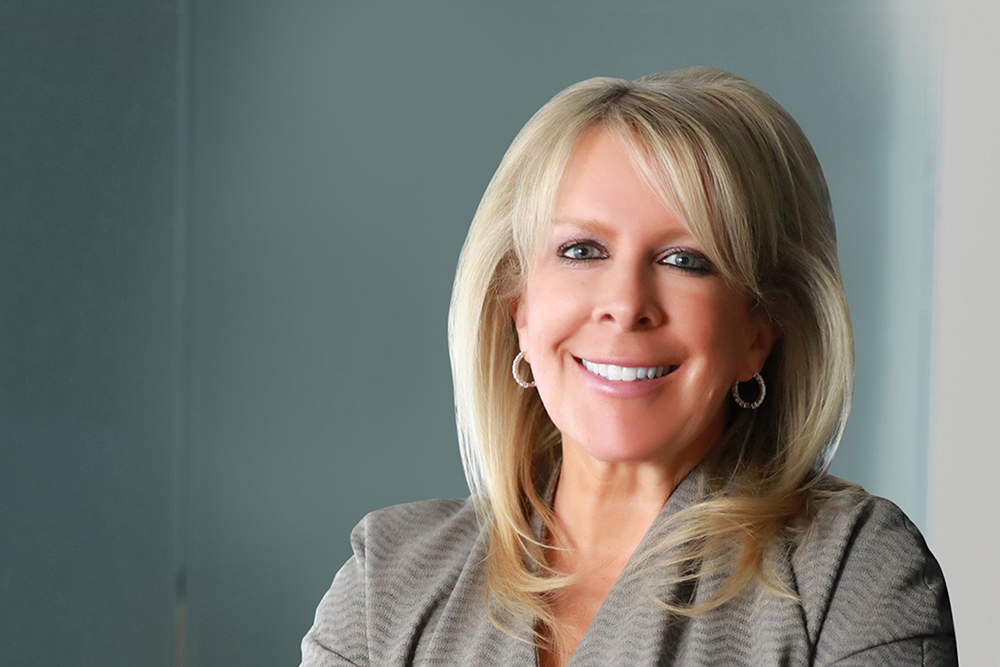
頂級人工智能人才爭奪戰(zhàn)已經(jīng)打響了,。
OpenAI去年11月發(fā)布的ChatGPT平臺讓人工智能,更具體地說是生成式人工智能,,一躍成為全球關(guān)注的焦點,。似乎在一夜之間,人工智能從科幻小說情節(jié)中的裝置變成了職場熱門話題,。
對這項技術(shù)發(fā)表看法的首席執(zhí)行官越來越多,。特斯拉(Tesla)和SpaceX的首席執(zhí)行官埃隆·馬斯克表示,如果懷疑論者對人工智能的持久性和指數(shù)級增長視而不見,,那么人工智能就會“像小行星一樣”撞上他們,。國際商用機器公司(IBM)首席執(zhí)行官阿爾溫德·克里希納估計,人工智能將承擔30%至50%的“重復性后臺任務(wù)”,。摩根大通(JPMorgan Chase)首席執(zhí)行官杰米·戴蒙在致股東的年度信中認為,,人工智能“對我們公司的未來至關(guān)重要”。盡管領(lǐng)導者們對人工智能將如何改變工作場所存在分歧,,但他們一致認為人工智能未來會改變工作場所,。正如《財富》雜志在上個季度的指南中所指出的那樣,他們正為一項可能顛覆當前職業(yè)規(guī)范的技術(shù)做準備,,包括加強精通人工智能的人才隊伍建設(shè),,并對現(xiàn)有人才進行再培訓,確保他們?yōu)槲磥碜龊贸浞譁蕚洹?
在本季度的《財富:職場》(Fortune@ Work)中,,九位人力資源高管討論了他們?nèi)绾斡米钚碌娜斯ぶ悄芄ぞ叻矫娴膶<襾沓鋵嵶约旱娜瞬艓臁?/p>
鑒于我們對人工智能技術(shù)及其應用的整體理解還很有限,,接受《財富》雜志采訪的高管們最常提到的是:要做好準備,。
人工智能人才爭奪戰(zhàn)已經(jīng)打響了。
我們詢問了九位高管,,他們計劃如何在激烈的競爭中提高員工的人工智能技能,,并吸引新人才。以下是他們的回答:
為便于理解,,本文略有刪減,。

可口可樂公司
麗莎·章,,全球首席人事官
您計劃如何提高員工技能,并為人工智能的未來儲備人才,?
最近,,我們推出了企業(yè)版可口可樂ChatGPT聊天機器人,并設(shè)立了人力資源知識中心,,使我們的員工能夠在日常工作中使用人工智能,。我們還在內(nèi)部社交網(wǎng)絡(luò)上推出了“如何利用人工智能”系列課程,幫助員工學習如何使用這些工具,。
我們在市場營銷領(lǐng)域使用人工智能,,以全新的、令人興奮的方式與消費者互動,。人工智能增強了我們快速創(chuàng)建和迭代超個性化內(nèi)容和信息的能力,,并重新構(gòu)想了我們生成創(chuàng)意內(nèi)容的方式,。
人工智能很強大,,但它并不完美。它能增強人類的能力,,但不能取代我們對員工,、對員工的知識和才能的需求。

賽富時公司
娜塔莉·斯卡迪諾,,招聘,、入職和員工學習全球主管
您計劃如何提高員工技能,并為人工智能的未來儲備人才,?
根據(jù)賽富時公司最近的研究,,人工智能技能被認為是最急需的技能之一,但只有十分之一的員工表示他們掌握了相關(guān)技能,。這意味著我們必須重新思考如何培訓企業(yè)員工,。首先從我們的下一代員工入手:實習生,。今年,我們的未來員工暑期實習項目計劃將人工智能貫穿始終,,讓學生有機會研究真正的人工智能解決方案,。我們的目標是,在繼續(xù)轉(zhuǎn)變整個企業(yè)的人才培養(yǎng)方式的同時,,快速啟動實習生學習人工智能的進程,。

思愛普公司
麥克斯韋·韋塞爾,,首席學習官
您計劃如何提高員工技能,并為人工智能的未來儲備人才,?
隨著人工智能越來越多地融入到日常工作中,,專業(yè)人士必須了解編碼基礎(chǔ)知識。當平民開發(fā)者能夠處理更復雜的事情時,,精通技術(shù)的計算機和數(shù)據(jù)科學家就可以騰出手來,,更多地專注于那些需要深入了解系統(tǒng)工作原理的問題。
關(guān)鍵是要提供針對平民開發(fā)者和低代碼,、無代碼綜合技能人士的培訓和開發(fā)課程,,以及針對高技術(shù)人才的培訓和開發(fā)課程。平民開發(fā)者可能不需要編寫那么多代碼,,但需要具備產(chǎn)品管理,、設(shè)計和用戶研究能力,以發(fā)揮他們研發(fā)的新工具的最大效能,。與此同時,,技術(shù)專家將轉(zhuǎn)向戰(zhàn)略性思維,并演變?yōu)闄C器學習工程師和人工智能分析師等新興角色,。企業(yè)必須提供學習機會來為基礎(chǔ)技術(shù)和新興技術(shù)領(lǐng)域人才提供支持,,以滿足不斷增長的創(chuàng)新需求。

美國家庭人壽保險公司
馬修·歐文比,首席人事官
您計劃如何提高員工技能,,并為人工智能的未來儲備人才,?
從人才招聘的角度來看,我們對人工智能及其對人才的影響持觀望態(tài)度,。在美國家庭人壽保險公司,,我們利用人工智能來完成許多重復性流程和程序,這為我們的“人力”資源創(chuàng)造了帶寬,。我的觀點是,,人工智能將顛覆人才組合的“邊界”,,這意味著輸入和輸出變化較小的職位以及基本的編程職位可以部分或完全實現(xiàn)自動化,人工智能還將顛覆數(shù)據(jù)分析或預測建模等職位要求的高端技能組合,。但從本質(zhì)上講,,我們所在的行業(yè)經(jīng)常在人們最水深火熱的時候與他們進行互動,因此,,雖然技術(shù)會幫助我們加快流程和程序,,但沒有什么能取代人與人之間的接觸。

強生公司
彼得·法索洛,首席人事官
您計劃如何提高員工技能,,并為人工智能的未來儲備人才,?
我們雙管齊下,以數(shù)據(jù)科學為先導,,將提高強生員工的技能作為整個企業(yè)的優(yōu)先事項,,并積極招募人工智能人才,以加速創(chuàng)新,。我們的首要任務(wù)是建立一個數(shù)字創(chuàng)新者生態(tài)系統(tǒng),,通過開發(fā)有效的醫(yī)療保健解決方案來釋放人工智能的潛力。例如,,在楊森制藥研發(fā)部門的研發(fā)中,,數(shù)據(jù)科學是核心競爭力,并從根本上決定了我們?nèi)绾卧谡麄€產(chǎn)品線中進行創(chuàng)新,。我們在短短幾年內(nèi)就建立了一支精通數(shù)據(jù)和醫(yī)學科學的優(yōu)秀制藥研發(fā)團隊,。我們對數(shù)字人才管道的投資已經(jīng)從討論數(shù)據(jù)科學的潛力轉(zhuǎn)向?qū)铀僮兏镄运幬铮赡軙颊弋a(chǎn)生深遠影響)開發(fā)產(chǎn)生實際影響。

賽默飛世爾科技公司
麗莎·布里特,首席人事官
您計劃如何提高員工技能,,并為人工智能的未來儲備人才?
我們相信,,有無限的機會可以使用生成式人工智能來進一步實現(xiàn)創(chuàng)新,,并讓同事們提高能力,從而專注于完成能夠創(chuàng)造最大價值的工作,。從人才的角度來看,,同事們將學會利用這項新技術(shù),同時保護機密信息和知識產(chǎn)權(quán),。具體來說,,需要的新興技能是熟練地創(chuàng)建提示,,同時還要具備驗證輸出和提高輸出準確性的專業(yè)知識。我們已經(jīng)成立了一個內(nèi)部團隊,,專注于提高同事們在生成式人工智能和相關(guān)風險方面的技能,。我們還廣泛提供人工智能、機器學習和自然語言處理方面的入門課程,。

Workday公司
阿什利·戈德史密斯,,首席人事官
您計劃如何提高員工技能,,并為人工智能的未來儲備人才?
我們一直在關(guān)注員工掌握了哪些技能,,以及我們在哪些方面可能存在差距,。有了這些信息,我們就知道應該把技能提高工作的重點放在哪里,,以及如何將員工與關(guān)鍵項目,、臨時工作甚至新職位等機會聯(lián)系起來。例如,,我們正在使用一個內(nèi)部平臺——一個具有嵌入式人工智能和機器學習功能的開放,、互聯(lián)的技能智能基礎(chǔ)平臺——來幫助員工了解有哪些機會向他們敞開大門,或者他們需要在哪些方面培養(yǎng)新技能,,以進入Workday的下一個職位,,并實現(xiàn)晉升。與此同時,,這使Workday領(lǐng)導者能夠更實時地了解全球勞動力能力,,并有助于我們掌握包括人工智能和機器學習在內(nèi)的關(guān)鍵技能,從而在這一快速的人才轉(zhuǎn)型進程中保持領(lǐng)先地位,。

諾斯羅普·格魯曼公司
安·艾迪生,,首席人事官
您計劃如何提高員工技能,,并為人工智能的未來儲備人才?
持續(xù)提升技能——從生產(chǎn)車間到領(lǐng)導層——是重中之重,。我們通過與大學和技術(shù)思想領(lǐng)袖合作,,為員工提供最新知識。例如,,我們最近為員工提供了斯坦福大學(Stanford University)研究生水平的人工智能專業(yè)課程,。我們還通過內(nèi)部學習門戶拓寬了先進技術(shù)產(chǎn)品,并投資于學習途徑,,以幫助培養(yǎng)前程似錦的人工智能領(lǐng)導者,。諾斯羅普·格魯曼公司目前與100多所大學,、學院和研究院合作,以促進國家安全最緊缺領(lǐng)域的人才的技能發(fā)展,,包括傳感器,、高超聲速、量子計算,、網(wǎng)絡(luò)和人工智能,。

愛克斯龍公司
艾米·貝斯特,首席人事官
您計劃如何提高員工技能,,并為人工智能的未來儲備人才,?
你可能認為我們是一家基礎(chǔ)設(shè)施公司,但愛克斯龍公司也是一家科技公司,。向數(shù)百萬家庭提供能源需要復雜的系統(tǒng),,也需要具備有效操作這些系統(tǒng)的專業(yè)知識的人才。我們需要精通各種形式的技術(shù),,我們正努力了解人工智能方面的機會,,從預測性維護到客戶數(shù)據(jù)分析。我們招聘聚焦員工是否具有保持領(lǐng)先于先進技術(shù)的能力,。我們還有一個正式的創(chuàng)新計劃,,鼓勵員工進行創(chuàng)造性地思考,并挑戰(zhàn)現(xiàn)有方法,。隨著人工智能的普及,,培養(yǎng)這種文化將變得愈加重要。我們還關(guān)注在技術(shù)領(lǐng)域代表性不足的群體,,并在我們所服務(wù)的社區(qū)建立人才梯隊,,以便更好地應對未來的挑戰(zhàn)。 (財富中文網(wǎng))
譯者:中慧言-王芳
頂級人工智能人才爭奪戰(zhàn)已經(jīng)打響了,。
OpenAI去年11月發(fā)布的ChatGPT平臺讓人工智能,,更具體地說是生成式人工智能,一躍成為全球關(guān)注的焦點,。似乎在一夜之間,,人工智能從科幻小說情節(jié)中的裝置變成了職場熱門話題。
對這項技術(shù)發(fā)表看法的首席執(zhí)行官越來越多,。特斯拉(Tesla)和SpaceX的首席執(zhí)行官埃隆·馬斯克表示,如果懷疑論者對人工智能的持久性和指數(shù)級增長視而不見,,那么人工智能就會“像小行星一樣”撞上他們,。國際商用機器公司(IBM)首席執(zhí)行官阿爾溫德·克里希納估計,,人工智能將承擔30%至50%的“重復性后臺任務(wù)”。摩根大通(JPMorgan Chase)首席執(zhí)行官杰米·戴蒙在致股東的年度信中認為,,人工智能“對我們公司的未來至關(guān)重要”。盡管領(lǐng)導者們對人工智能將如何改變工作場所存在分歧,,但他們一致認為人工智能未來會改變工作場所,。正如《財富》雜志在上個季度的指南中所指出的那樣,他們正為一項可能顛覆當前職業(yè)規(guī)范的技術(shù)做準備,,包括加強精通人工智能的人才隊伍建設(shè),并對現(xiàn)有人才進行再培訓,,確保他們?yōu)槲磥碜龊贸浞譁蕚洹?
在本季度的《財富:職場》(Fortune@ Work)中,,九位人力資源高管討論了他們?nèi)绾斡米钚碌娜斯ぶ悄芄ぞ叻矫娴膶<襾沓鋵嵶约旱娜瞬艓臁?/p>
鑒于我們對人工智能技術(shù)及其應用的整體理解還很有限,,接受《財富》雜志采訪的高管們最常提到的是:要做好準備。
人工智能人才爭奪戰(zhàn)已經(jīng)打響了,。
我們詢問了九位高管,,他們計劃如何在激烈的競爭中提高員工的人工智能技能,并吸引新人才,。以下是他們的回答:
為便于理解,本文略有刪減,。
可口可樂公司
麗莎·章,全球首席人事官
您計劃如何提高員工技能,,并為人工智能的未來儲備人才,?
最近,我們推出了企業(yè)版可口可樂ChatGPT聊天機器人,,并設(shè)立了人力資源知識中心,,使我們的員工能夠在日常工作中使用人工智能。我們還在內(nèi)部社交網(wǎng)絡(luò)上推出了“如何利用人工智能”系列課程,,幫助員工學習如何使用這些工具,。
我們在市場營銷領(lǐng)域使用人工智能,以全新的,、令人興奮的方式與消費者互動,。人工智能增強了我們快速創(chuàng)建和迭代超個性化內(nèi)容和信息的能力,并重新構(gòu)想了我們生成創(chuàng)意內(nèi)容的方式。
人工智能很強大,,但它并不完美,。它能增強人類的能力,但不能取代我們對員工,、對員工的知識和才能的需求,。
賽富時公司
娜塔莉·斯卡迪諾,招聘,、入職和員工學習全球主管
您計劃如何提高員工技能,,并為人工智能的未來儲備人才?
根據(jù)賽富時公司最近的研究,,人工智能技能被認為是最急需的技能之一,,但只有十分之一的員工表示他們掌握了相關(guān)技能。這意味著我們必須重新思考如何培訓企業(yè)員工,。首先從我們的下一代員工入手:實習生,。今年,我們的未來員工暑期實習項目計劃將人工智能貫穿始終,,讓學生有機會研究真正的人工智能解決方案,。我們的目標是,在繼續(xù)轉(zhuǎn)變整個企業(yè)的人才培養(yǎng)方式的同時,,快速啟動實習生學習人工智能的進程,。
思愛普公司
麥克斯韋·韋塞爾,,首席學習官
您計劃如何提高員工技能,,并為人工智能的未來儲備人才?
隨著人工智能越來越多地融入到日常工作中,,專業(yè)人士必須了解編碼基礎(chǔ)知識,。當平民開發(fā)者能夠處理更復雜的事情時,精通技術(shù)的計算機和數(shù)據(jù)科學家就可以騰出手來,,更多地專注于那些需要深入了解系統(tǒng)工作原理的問題,。
關(guān)鍵是要提供針對平民開發(fā)者和低代碼、無代碼綜合技能人士的培訓和開發(fā)課程,,以及針對高技術(shù)人才的培訓和開發(fā)課程,。平民開發(fā)者可能不需要編寫那么多代碼,但需要具備產(chǎn)品管理,、設(shè)計和用戶研究能力,,以發(fā)揮他們研發(fā)的新工具的最大效能。與此同時,,技術(shù)專家將轉(zhuǎn)向戰(zhàn)略性思維,,并演變?yōu)闄C器學習工程師和人工智能分析師等新興角色,。企業(yè)必須提供學習機會來為基礎(chǔ)技術(shù)和新興技術(shù)領(lǐng)域人才提供支持,以滿足不斷增長的創(chuàng)新需求,。
美國家庭人壽保險公司
馬修·歐文比,,首席人事官
您計劃如何提高員工技能,,并為人工智能的未來儲備人才,?
從人才招聘的角度來看,我們對人工智能及其對人才的影響持觀望態(tài)度,。在美國家庭人壽保險公司,,我們利用人工智能來完成許多重復性流程和程序,這為我們的“人力”資源創(chuàng)造了帶寬,。我的觀點是,,人工智能將顛覆人才組合的“邊界”,這意味著輸入和輸出變化較小的職位以及基本的編程職位可以部分或完全實現(xiàn)自動化,,人工智能還將顛覆數(shù)據(jù)分析或預測建模等職位要求的高端技能組合,。但從本質(zhì)上講,我們所在的行業(yè)經(jīng)常在人們最水深火熱的時候與他們進行互動,,因此,,雖然技術(shù)會幫助我們加快流程和程序,但沒有什么能取代人與人之間的接觸,。
強生公司
彼得·法索洛,,首席人事官
您計劃如何提高員工技能,并為人工智能的未來儲備人才,?
我們雙管齊下,,以數(shù)據(jù)科學為先導,將提高強生員工的技能作為整個企業(yè)的優(yōu)先事項,,并積極招募人工智能人才,,以加速創(chuàng)新。我們的首要任務(wù)是建立一個數(shù)字創(chuàng)新者生態(tài)系統(tǒng),,通過開發(fā)有效的醫(yī)療保健解決方案來釋放人工智能的潛力,。例如,在楊森制藥研發(fā)部門的研發(fā)中,,數(shù)據(jù)科學是核心競爭力,,并從根本上決定了我們?nèi)绾卧谡麄€產(chǎn)品線中進行創(chuàng)新。我們在短短幾年內(nèi)就建立了一支精通數(shù)據(jù)和醫(yī)學科學的優(yōu)秀制藥研發(fā)團隊,。我們對數(shù)字人才管道的投資已經(jīng)從討論數(shù)據(jù)科學的潛力轉(zhuǎn)向?qū)铀僮兏镄运幬铮赡軙颊弋a(chǎn)生深遠影響)開發(fā)產(chǎn)生實際影響,。
賽默飛世爾科技公司
麗莎·布里特,首席人事官
您計劃如何提高員工技能,,并為人工智能的未來儲備人才,?
我們相信,有無限的機會可以使用生成式人工智能來進一步實現(xiàn)創(chuàng)新,并讓同事們提高能力,,從而專注于完成能夠創(chuàng)造最大價值的工作,。從人才的角度來看,同事們將學會利用這項新技術(shù),,同時保護機密信息和知識產(chǎn)權(quán),。具體來說,需要的新興技能是熟練地創(chuàng)建提示,,同時還要具備驗證輸出和提高輸出準確性的專業(yè)知識,。我們已經(jīng)成立了一個內(nèi)部團隊,專注于提高同事們在生成式人工智能和相關(guān)風險方面的技能,。我們還廣泛提供人工智能,、機器學習和自然語言處理方面的入門課程。
Workday公司
阿什利·戈德史密斯,,首席人事官
您計劃如何提高員工技能,,并為人工智能的未來儲備人才?
我們一直在關(guān)注員工掌握了哪些技能,,以及我們在哪些方面可能存在差距,。有了這些信息,我們就知道應該把技能提高工作的重點放在哪里,,以及如何將員工與關(guān)鍵項目,、臨時工作甚至新職位等機會聯(lián)系起來。例如,,我們正在使用一個內(nèi)部平臺——一個具有嵌入式人工智能和機器學習功能的開放,、互聯(lián)的技能智能基礎(chǔ)平臺——來幫助員工了解有哪些機會向他們敞開大門,或者他們需要在哪些方面培養(yǎng)新技能,,以進入Workday的下一個職位,,并實現(xiàn)晉升。與此同時,,這使Workday領(lǐng)導者能夠更實時地了解全球勞動力能力,,并有助于我們掌握包括人工智能和機器學習在內(nèi)的關(guān)鍵技能,從而在這一快速的人才轉(zhuǎn)型進程中保持領(lǐng)先地位,。
諾斯羅普·格魯曼公司
安·艾迪生,,首席人事官
您計劃如何提高員工技能,并為人工智能的未來儲備人才,?
持續(xù)提升技能——從生產(chǎn)車間到領(lǐng)導層——是重中之重,。我們通過與大學和技術(shù)思想領(lǐng)袖合作,為員工提供最新知識,。例如,,我們最近為員工提供了斯坦福大學(Stanford University)研究生水平的人工智能專業(yè)課程,。我們還通過內(nèi)部學習門戶拓寬了先進技術(shù)產(chǎn)品,并投資于學習途徑,,以幫助培養(yǎng)前程似錦的人工智能領(lǐng)導者,。諾斯羅普·格魯曼公司目前與100多所大學、學院和研究院合作,,以促進國家安全最緊缺領(lǐng)域的人才的技能發(fā)展,,包括傳感器、高超聲速,、量子計算,、網(wǎng)絡(luò)和人工智能。
愛克斯龍公司
艾米·貝斯特,,首席人事官
您計劃如何提高員工技能,并為人工智能的未來儲備人才,?
你可能認為我們是一家基礎(chǔ)設(shè)施公司,,但愛克斯龍公司也是一家科技公司。向數(shù)百萬家庭提供能源需要復雜的系統(tǒng),,也需要具備有效操作這些系統(tǒng)的專業(yè)知識的人才,。我們需要精通各種形式的技術(shù),我們正努力了解人工智能方面的機會,,從預測性維護到客戶數(shù)據(jù)分析,。我們招聘聚焦員工是否具有保持領(lǐng)先于先進技術(shù)的能力。我們還有一個正式的創(chuàng)新計劃,,鼓勵員工進行創(chuàng)造性地思考,,并挑戰(zhàn)現(xiàn)有方法。隨著人工智能的普及,,培養(yǎng)這種文化將變得愈加重要,。我們還關(guān)注在技術(shù)領(lǐng)域代表性不足的群體,并在我們所服務(wù)的社區(qū)建立人才梯隊,,以便更好地應對未來的挑戰(zhàn),。 (財富中文網(wǎng))
譯者:中慧言-王芳
The race for top A.I. talent is on.
OpenAI’s November release of its ChatGPT platform catapulted artificial intelligence, and more specifically generative A.I., into the global consciousness. Seemingly overnight, A.I. went from a sci-fi plot device to a workplace hot topic.
The list of CEOs weighing in on the technology grows longer by the day. Tesla and SpaceX CEO Elon Musk said A.I. would hit skeptics “l(fā)ike an asteroid” if they buried their heads in the sand about its permanence and exponential growth. IBM CEO Arvind Krishna estimated it would assume between 30% to 50% of “repetitive back-office tasks.” And in his annual letter to shareholders, JPMorgan Chase CEO Jamie Dimon deemed it “critical to our company’s future.” Though leaders differ on how A.I. will transform the workplace, they agree that it will. And they’re preparing for a technology that could upend current professional norms by ramping up talent well-versed in A.I. and reskilling current talent to ensure they’re well-equipped for the future, as Fortune noted in last quarter’s playbook.
For this quarter’s edition of Fortune @ Work, nine human resources executives discussed how they’re stocking their talent pool with experts in newly minted A.I. tools.
Given that our collective understanding of the technology and its applications is still quite limited in scope, the most common refrain from executives who spoke to Fortune is an emphasis on preparation.
The A.I. talent race is on.
We asked nine executives how they plan to upskill employees in A.I. and attract new talent amid head-to-head competition. Here’s what they told us:
This article has been edited for length and clarity.
The Coca-Cola Co.
Lisa Chang, global chief people officer
How do you plan to upskill employees and secure talent for the future of A.I.?
Recently, we launched an enterprise version of Coca-Cola ChatGPT and an HR knowledge hub to enable our people to use A.I. in their day-to-day work. We also launched a “Leveraging A.I.” series on our internal social network with courses to help associates learn how to use these tools.
We’re using A.I. in our marketing function to engage with consumers in new and exciting ways. A.I. amplifies our ability to rapidly create and iterate on hyper-personalized content and messaging and reimagine how we produce creative content.
A.I. is powerful, but it’s not perfect. It is an enhancer of human capability but does not replace our need for people, their knowledge, and talents.
Salesforce
Nathalie Scardino, global head of recruiting, onboarding, and employee learning
How do you plan to upskill employees and secure talent for the future of A.I.?
A.I. skills were cited as some of the most in demand, according to recent Salesforce research, but only one in 10 workers said they have those skills. That means we have to reimagine how we train and develop every part of our organization, starting with the next generation of our workforce: interns. This year, our Futureforce summer intern program will infuse A.I. throughout, giving students the opportunity to work on real A.I. solutions. The goal is to jump-start A.I. learning with this group as we continue transforming talent development across the organization.
SAP
Maxwell Wessel, chief learning officer
How do you plan to upskill employees and secure talent for the future of A.I.?
As A.I. becomes more integrated into workday tasks, professionals must understand the foundations of coding. When citizen developers can tackle ever more complex things, deeply technical computer and data scientists are freed up to focus more on issues that require an in-depth understanding of how the systems work.
It’s critical to provide training and development courses focused on citizen developers and low-code, no-code skill sets, as well as those geared for highly technical roles. Citizen developers may not need to code as much but will require product management, design, and user research capabilities to get the most out of their new tools. Meanwhile, tech pros will shift into more strategic thinking and evolve into emerging roles such as machine learning engineers and A.I. analysts. Organizations must provide learning opportunities to support both the basic and emerging areas of technology in order to feed increased innovation.
Aflac
Matthew Owenby, chief human resources officer
How do you plan to upskill employees and secure talent for the future of A.I.?
From a talent recruitment perspective, we are taking a wait-and-see approach to A.I. and talent impacts. At Aflac, we utilize A.I. for many of our repetitive processes and programs, which creates bandwidth for our “human” resources. My view is that A.I. will be disruptive at the “edges” of a talent portfolio, meaning roles that can be partially or fully automated with low variation in input and outcome, basic programming activities, and at the higher end of the skills portfolio in data analytics or predictive modeling positions. But we are, at our core, an industry that interacts with people often during their most difficult times, so while technology will help us accelerate our processes and procedures, nothing will ever replace a human touch.
Johnson & Johnson
Peter Fasolo, chief human resources officer
How do you plan to upskill employees and secure talent for the future of A.I.?
Our two-pronged approach to leading with data science focuses on upskilling J&J employees as an enterprise-wide priority and actively recruiting A.I. talent to accelerate innovation. Our priority is to build an ecosystem of digital innovators who unleash the promise of A.I. by developing effective health care solutions. For example, in Janssen research and development, our pharmaceutical R&D arm, data science is embedded as a core competency and fundamentally shapes how we innovate across our pipeline. We’ve established a talented pharmaceutical R&D team skilled in data and medical science in just a few years. Investments in our digital talent pipeline have shifted from discussing the potential of data science to the actionable impact of accelerating the development of transformative medicines that could deliver profound patient impact.
Thermo Fisher Scientific
Lisa Britt, chief human resources officer
How do you plan to upskill employees and secure talent for the future of A.I.?
We believe there are endless opportunities to use generative A.I. to help us further innovate and create the capacity for our colleagues to focus on work with the greatest impact. From a talent perspective, colleagues will learn to leverage this new technology while protecting our confidential information and intellectual property. Specifically, the emerging skills required are skilled prompt creation balanced with expertise to validate and refine outcome accuracy. We already have an internal team focused on upskilling our colleagues on generative A.I. and the associated risks. We also broadly offer introductory courses on A.I., machine learning, and natural language processing.
Workday
Ashley Goldsmith, chief people officer
How do you plan to upskill employees and secure talent for the future of A.I.?
We’re always looking at what skills exist within our workforce and where we might have gaps. With this information, we know where to focus our upskilling efforts and how to connect employees to opportunities such as key projects, gigs, or even new roles. For example, we’re using an internal platform—an open, interconnected skills intelligence foundation with embedded A.I. and machine learning—to help employees see what opportunities are open to them or where they need to develop new skills to get into their next role within Workday and grow their career. At the same time, this gives our Workday leaders more real-time insight into our global workforce capabilities and helps ensure we have critical skills, including A.I. and machine learning, to remain at the forefront of this rapid talent shift.
Northrop Grumman
Ann Addison, chief human resources officer
How do you plan to upskill employees and secure talent for the future of A.I.?
Continual upskilling—from the manufacturing floor to leadership—is a top priority. We’re bringing the most up-to-date learnings to our workforce through partnerships with universities and tech thought leaders. For example, we recently offered employees a graduate-level Stanford University A.I. professional program. We also broadened our advanced technology offerings through our internal learning portal and invested in learning pathways to help develop up-and-coming A.I. leaders. Northrop Grumman currently partners with over 100 universities, colleges, and grade schools to promote skill development in the most high-demand areas of national security, including sensors, hypersonics, quantum computing, cyber, and A.I.
Exelon
Amy Best, chief human resources officer
How do you plan to upskill employees and secure talent for the future of A.I.?
You may think of us as an infrastructure company, but Exelon is also a technology company. Delivering energy to millions of homes requires complex systems and people with the expertise to operate them effectively. We need to be adept at all forms of technology, and we are working to understand the opportunities for A.I., from predictive maintenance to customer data analytics. The capacity to stay ahead of advancing technology is already a focus of our recruiting. We also have a formal innovation program to encourage employees to think creatively and challenge current approaches. Nurturing this culture will be important as A.I. becomes more commonplace. We’re also focusing on groups that have been underrepresented in technology fields and building a pipeline from the communities we serve to better prepare for future challenges.






